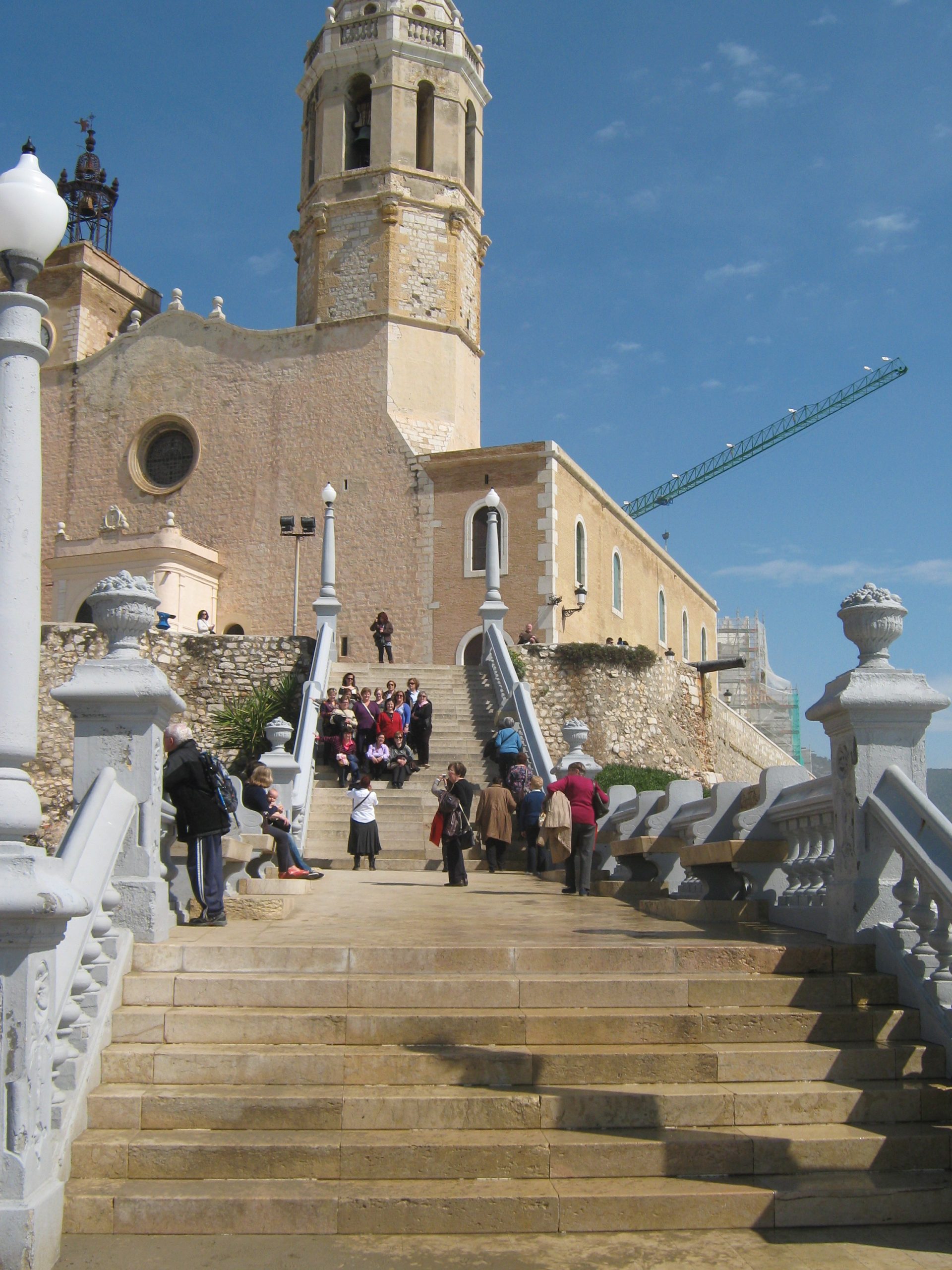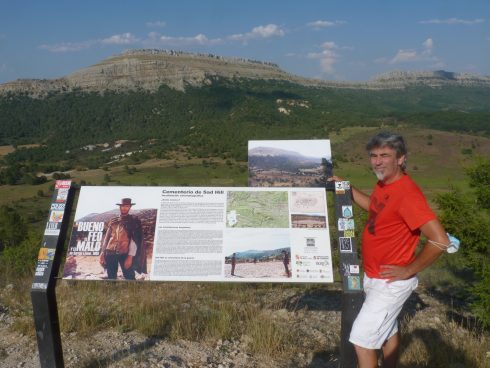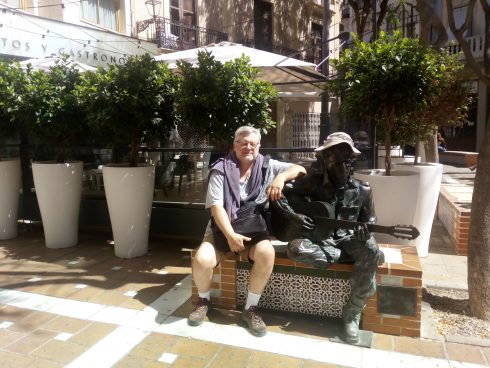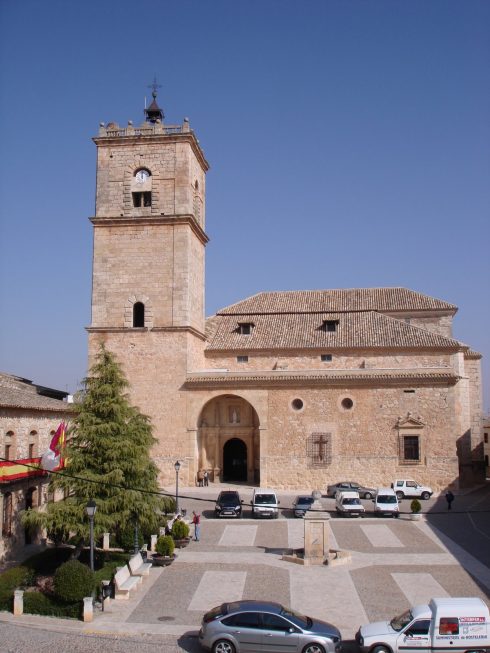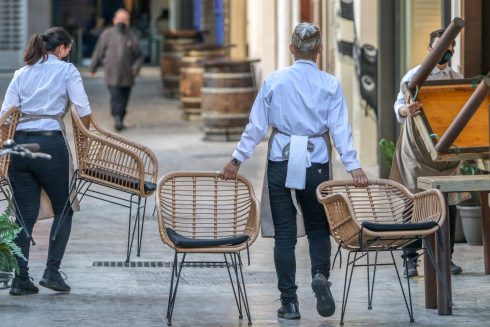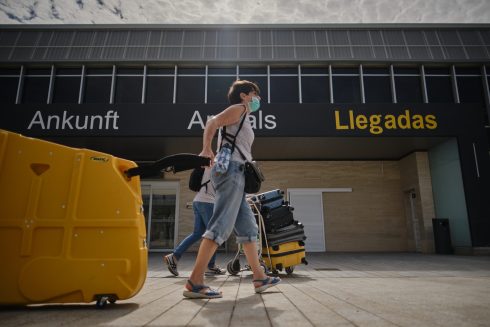SITGES is one of those towns that invite you to make films and, in fact, stars such as Errol Flynn have filmed there.
On 22 May 2021, the Sal D’or at the Palau Maricel Carrer de Fonollar, 7, in Sitges, hosted a meeting of writers and experts to talk about films.
Five experts shared their knowledge of both Sitges, Catalunya and the wider world of the cinema in a series of talks.
The event can now be followed on streaming here: https://www.youtube.com/watch?v=yos5Jn2GFak&t=3785s
10.00-10.10 INTRODUCTION: Pere Izquierdo i Tugas. Director-gerent (en funcions) Museus de Sitges.
10.15- 11.00 Francesc Borderia (Sitges): Sitges: a film village. Francesc Borderia is a native of Sitges. Author of Sitges, Plató de Cinema, his family has run a cinema there and he has presented a radio programme on the cinema.
11.00-11.45 Margarida Araya (Barcelona): Sir Laurence Olivier: films and stays in Spain/ “Verd madur”: filmed in Vall d’Aran i dubbed into català. Margarida is a translator and has published a book about Sir Laurence Olivier’s visits to Spain. Verd madur is a Spanish film by Rafael Gil Álvarez, based on the novel of the same name by Josep Virós i Moyés.
11.45-12.15 Bob Yareham (Valencia): Catalan Quiz: What do you know about films shot in Catalonia in Shakespeare’s language? That is the question.
Bob Yareham is a teacher and writer, author of Movies Made in Spain, which tells the stories of more than 900 English-language films shot in Spain.
BREAK
12.35-13.20 Jaume Palau (Lleida) ‘James Bond’s travels: Sean Connery was there’. Jaume has a diploma in tourism and has published books on the locations of James Bond films and the Game of Thrones series.
13.20-14.00 John Carlin (Sitges): From page to film. His writing has been turned into films such as Clint Eastwood’s Invictus and Die Hard 4. He was also involved in the mini-series This is Football. He has published books on Nelson Mandela, Rafa Nadal and Real Madrid among others. He writes articles for La Vanguardia.
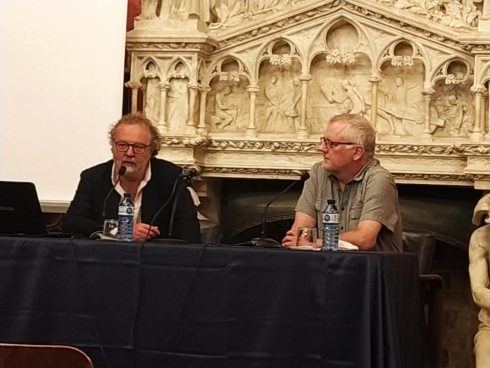
Sitges, a popular resort just down the coast from Barcelona, has a long and happy relationship with film making.
Decameron Nights (1953) was an adaptation of Bocaccio’s ‘Decameron’ starring Joan Fontaine.
The walls of Ávila open the film as the inhabitants of Florence flee from a mercenary army and Boccaccio arrives to teach us about love.
When he rides from Ávila/Florence in search of Fiametta (Fontaine), the aqueduct of Segovia can be seen in the background as he approaches her house.
Later, when Fontaine plays a female doctor who saves the king’s life, the locals celebrate his salvation dancing beneath the Alcázar castle of Segovia.
The scenes in Sitges were explained to us by local cinema expert Francesc Borderia, who used to run a cinema in the town and has presented a weekly radio programme about the cinema. Filming took place in the square in front of the emblematic church of Sant Bartomeu i Santa Tecla, where you can today see a cannon and a plaque claiming that it was used to see off a British fleet, and on the steps leading up to it known as the Escalinata; both symbols of Sitges, as well as on the nearby Ribera Beach, where actress Joan Fontaine disembarks during the section of the film dedicated to the tale of Paganino the Pirate, who kidnaps Fontaine, and inevitably falls in love with her.
King’s Rhapsody (1955) was a massive flop for a fading Errol Fynn, who does an ‘Edward VIII’; abdicating for love, although he later marries lovelessly out of a sense of duty.
‘Laurentia’ is the kingdom and the songs of Ivor Novello add a touch of class to some dull royals.
Errol Flynn’s presence caused a sensation during the week spent in Sitges, Barcelona, where many local people earned as much as 15 pesetas and a ham roll as extras, including a local man playing the Bishop who presided over Flynn’s wedding.
The red carpeted staircase, ‘La Escalinata de la Punta’ plays a prominent part in the film’s opening scene, although when we move inside the church we are in fact transferred to a completely different site, the interior of mountaintop Montserrat Monastery, and the weirdly shaped mountains over which the credits roll are also Montserrat, a sacred place for the Catalan people.
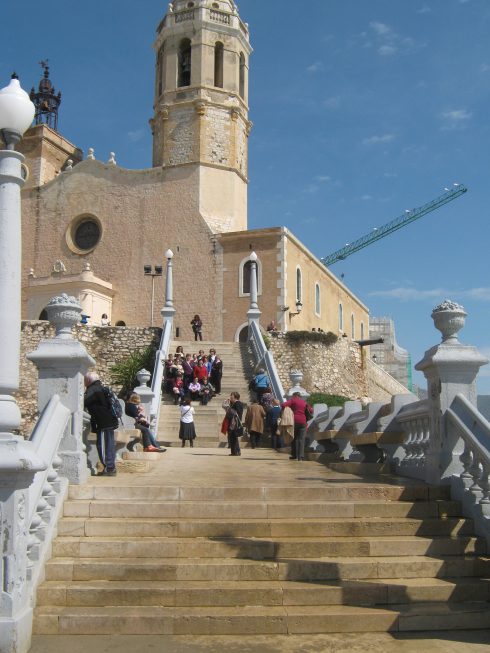
The stairs will be used again for the coronation of Flynn’s son.
Also used was the seaside promenade el Passeig de la Ribera, where one of Flynn’s passionate love scenes was filmed under a full moon with swaying palms and breaking waves in evidence.
It was in fact during the 1950s that Flynn chose Illetes, in Mallorca, as a good place to raise a family. He had a mansion in Cala Marina which was known by the locals as ‘Es Molí de’n Errol Flynn’ and a yacht named Zaca, which he moored in the Palma Royal Sailing Club. In his final days he established his permanent residence there with Patrice Wymore, his last wife.
In 1985 Calvià town council paid him homage by inviting his widow to visit the area and also unveil a plaque to him beside the Hotel Albatros, where she lodged.
All that remains now of Flynn’s old home is a mythological animal protruding from the wall of the windmill tower in a square in front of where the house used to be.
Flynn had first arrived in Mallorca in 1950 with Wymore, who he had just married in Montecarlo, and was on his way to Gibraltar when a storm forced them to take shelter on the northern shore of Mallorca. They then followed the coast to Palma and liked it so much that they promised to return.
The fascination of Americans for Sitges also affected Douglas Fairbanks; both Senior and Junior were in the town in the early 30s, staying at the Terramar Hotel at the southern end of the beach, where they were planning a project using exteriors in the area, a plan brought to an end by the advent of the Spanish Civil War.
In The Day of the Triffids (1962), the climax supposedly takes place in Alicante, although in reality it was Sitges.
As our heroes flee the plants, Spanish extras on supermarket trolleys adorned with twigs, there are some anonymous, but attractive locations, including a lighthouse surrounded by sea water to which the Triffids flock, despite the fact that it is sea water that finally turns them into sludge
There is a certain nostalgia about some aspects of the film; of scientists operating enormous machines with rows of meaningless lights; of nurses lighting their patients’ cigarettes, of all and any problem being resolved by a refreshing cup of tea; of apparently intelligent women trying to scream the enemy plants to death instead of scything their tendrils like the men do.
Perhaps it was the need to relax after such an intense and stressful film that led the producers to film the climax in Alicante, where they destroy the beasts from space with plain old sea water.
Island of the Damned (1976) is a bit of a spoiler title as an English couple try to enjoy a pleasant stay in a Spanish seaside resort and find themselves in the middle of Hitchcock’s ‘The Birds,’ except that our feathered friends are children.
At first they visit the imaginary town of Benavis, situated south of Tarragona according to the map they are shown. They are in fact in Sitges, north of Tarragona, where they experience the town’s noisy fiestas, including a Chinese style dragon and fireworks, which gets them longing for the ‘peaceful’ island of Almanzora.
In Sitges, Francesc Borderia informed us that scenes were filmed in the charming little streets called San Joan and Bosc in the historic centre.
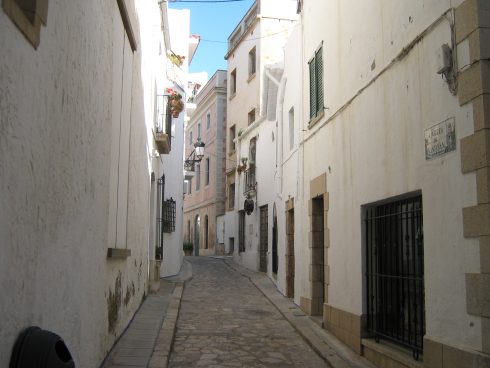
The film, by Spanish director Narciso Ibáñez Serrador, opens with documentary footage from the Holocaust and other conflicts where children have been ill treated, and was originally intended to star Anthony Hopkins. In Spanish it’s called ‘Who would kill a Child?’
Esmeralda Bay (1989) is another Jess (or Jesús) Franco film, this time starring Fernando Rey, George Kennedy and Ramon Estevez (son of Martin and brother of Charlie Sheen, although here he is credited as Ramon Sheen).
Tales of Central American revolution filmed in Sitges, which represents the capital, with three long shots during the film in which its emblematic church looming over the beach is clearly visible.
Face of Terror (2003) has a wholly believable plot in which an American police officer travels to Barcelona looking for his lost sister, who may have become a victim of a terrorist cell using girls as bombs.
This is another collaboration between the Catalan producer (Drimtim) and American actors, using the streets and monuments of Barcelona as a backdrop.
Most of the action occurs in Barcelona, but the climax takes place in front of and around a seaside hotel, the Gran Meliá, at Sitges; a point that is made clear when the ambulance drives away with the town’s name on its rear.
It is on the steps of the hotel that the villain (who has his misunderstood side), is foiled in his plan to blow up the hotel using a suitcase bomb, before being pursued and vanquished down at the beach.
It is appropriate that the hotel should appear in a film, because it is here that the Sitges International Film Festival is held every year in October.
If you are not so lucky, you might bump into a zombie, as one of the highlights of the festival is the Zombie Walk, which actually starts at the hotel before moving off into town to scare the locals.
The Deal (2006) has more Americans in Sitges, specifically a woman who loses her wine making husband and her daughter in a fire. What Oscar Wilde would call ‘clumsy.’
She decides to investigate and uncovers the usual conspiracy involving Interpol and the Colombian underworld.
According to local cinema expert Francesc Borderia, the film includes a car chase that reaches the San Sebastià beach promenade at Sitges and continues through the narrow streets of the historic centre, including the Town Hall square, climaxing in the square in front of the church.
This may be what they call a spoiler, but personally I find it difficult to suspend disbelief when a man who has been shot four times, makes an upbeat speech to his wife and daughter and then dies with apparent satisfaction and a smile on his lips.
Many film producers assure their audiences that no animals were hurt in the making of the film, although they rarely mention babies.
In Savage Grace (2007), the baby in question spends a lot of his time in his parents’ smoke shroud as they lean over his cot, ash-dangling fags in mouths. It may explain why he ends up as a dope-smoking hippy in Mallorca.
It’s good to have a film with a message, and the message here is that you shouldn’t introduce your attractive Spanish girlfriend to your bored but still not unattractive father, otherwise you’ll end up alone; or with your deranged mother and her Bertolucci lunar complex.
Although set in New York, Paris, Mallorca and London, the entire film was in fact shot in Spain, and mostly around Barcelona. Spanish habitual Simón Andreu this time tries his hand at playing a Frenchman, Jean Pierre Souvestre.
Cadaqués in Girona province plays itself as the summer holiday Costa Brava location for the rich family, which is based upon the true story of the American dynasty of the ‘Bakelite’ fortune.
Sitges was also used as a location; it is here that we see father Brooks seated with his son Tony and then Julianne Moore with Spanish actress Belen Rueda in various flashbacks without dialogue on the terrace of a restaurant with large windows overlooking the sea. The restaurant in question is El Viver, located above the San Sebastià beach just to the north of Sitges’ historic centre, just below the cemetery.
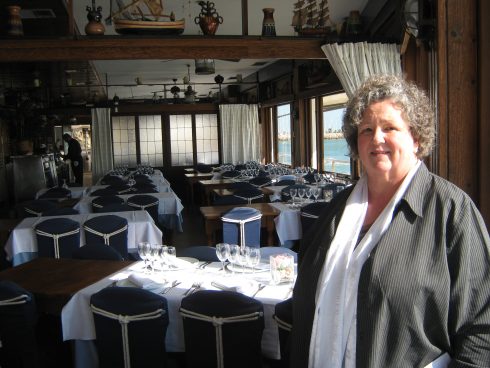
Owner Margarita Sanchez informed us that the filming actually took place on the roof of the restaurant on a single day’s shooting in August 2006.
Margarita had to feed between 50 and 60 actors and crew from 5 am onwards. The restaurant is very popular, and rightly so, with the stars, who frequently eat here during the Sitges Film Festival. Among the special guests that have dined here are Ralph Fiennes, Anthony Perkins and Anthony Hopkins.
If you eat there, as we did, try the local dish Xatò (absolutely delicious).
Reflections (2008) Timothy Hutton stars in another Barcelona-based thriller by director Brian Goeres. This time a serial killer called ‘Pygmalion’ brings police officer Hutton to the Catalan capital.
Among the locations used were Edificio Fira (Trade Fair) of Barcelona, Forum Barcelona and the Port D’aiguadolç marina in Sitges, where Hutton is informed of Marco’s abduction.
As well as a film festival, Sitges also has a school for would-be film makers, afilm International Film Workshops, where they produce feature films as part of their course. Logically, Sitges features in a lot of them.
Checkout (2011) is a black comedy about ‘suicide tourism’ featuring guest house for suicides (the definitive check out), and one guest whose hesitation causes some concern to the landlady.
The guest house in question was the delightful Hotel Romantic, a beautiful, historic hotel in the old part of Sitges, which is full of noble mansions.
In Dancing Dogs (2012) the Hotel Romantic, Carrer de Sant Isidre 33, was again a location, representing Elizabeta’s home.
Also featured are the El Prado theatre, Carrer de Francesc Gumà, 6, where the sisters are forced to dance, and the streets and beaches of the town. The film ends at the Avinguda de Balmins beach, where the dead sister’s ashes are finally scattered.
Leaving Hotel Romantic (2013) was filmed entirely in the hotel, where a guest’s death starts the ball rolling.
In The Afterglow (2014) Laura’s death scene was filmed at Carrer de la Devesa, Sitges, while Laura’s hypnosis scene was filmed at Hotel Estela, Av. de Port D’Aiguadolç, 8, Sitges.
Oliver’s dream sequence took place at Hotel Romantic, as did Laura’s visit to the psychiatrist.
The beach that appears in various takes was San Sebastián beach at Sitges.

